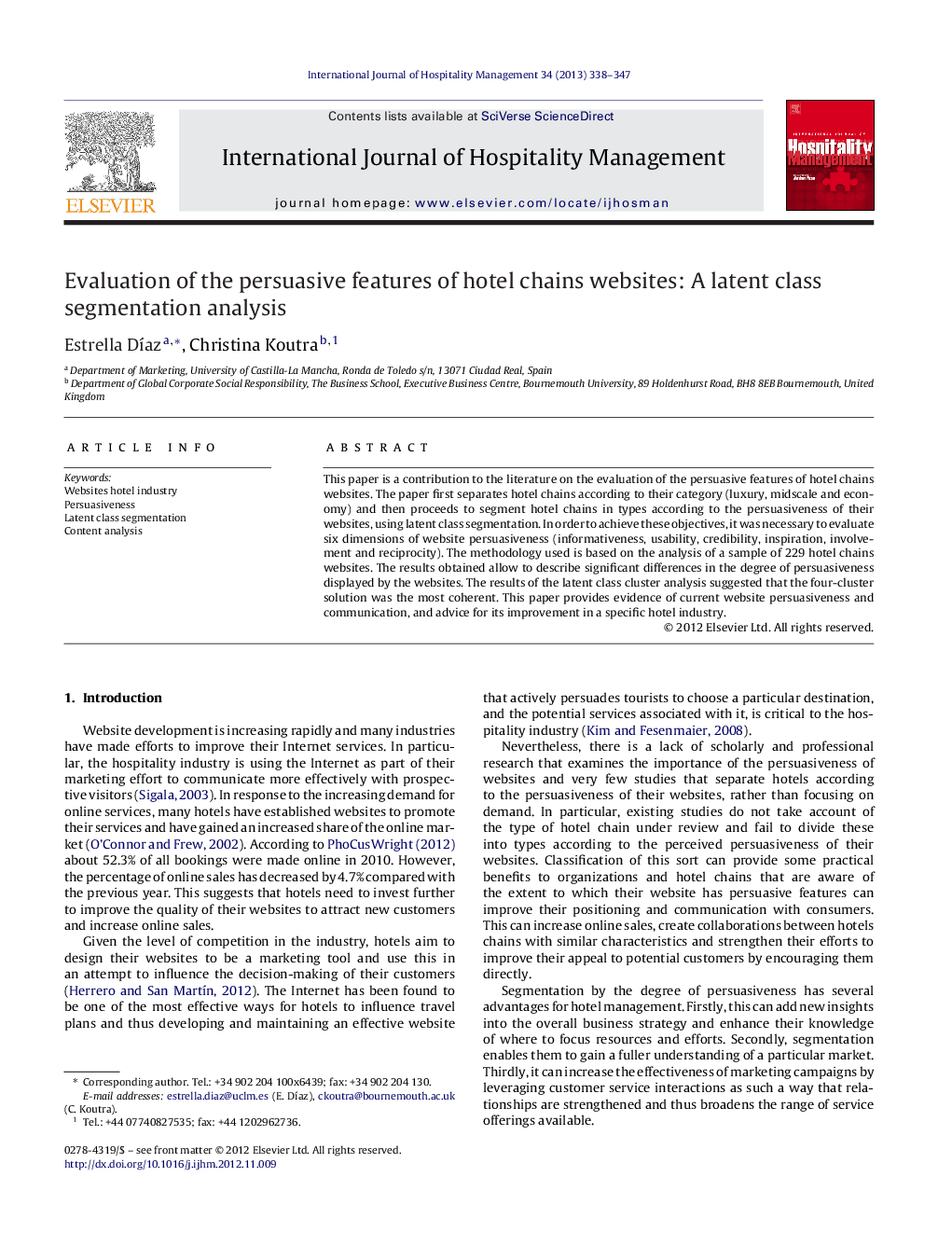| Article ID | Journal | Published Year | Pages | File Type |
|---|---|---|---|---|
| 1009566 | International Journal of Hospitality Management | 2013 | 10 Pages |
This paper is a contribution to the literature on the evaluation of the persuasive features of hotel chains websites. The paper first separates hotel chains according to their category (luxury, midscale and economy) and then proceeds to segment hotel chains in types according to the persuasiveness of their websites, using latent class segmentation. In order to achieve these objectives, it was necessary to evaluate six dimensions of website persuasiveness (informativeness, usability, credibility, inspiration, involvement and reciprocity). The methodology used is based on the analysis of a sample of 229 hotel chains websites. The results obtained allow to describe significant differences in the degree of persuasiveness displayed by the websites. The results of the latent class cluster analysis suggested that the four-cluster solution was the most coherent. This paper provides evidence of current website persuasiveness and communication, and advice for its improvement in a specific hotel industry.
Graphical abstractFigure optionsDownload full-size imageDownload as PowerPoint slideHighlights► A new perspective of hotel segmentation. ► Differences in hotel categories according to persuasiveness websites. ► Luxury hotel chains have higher percentage of persuasiveness websites. ► Four groups of hotel chains according to persuasiveness websites. ► Different strategies to improve the persuasive features of hotel chains websites.
